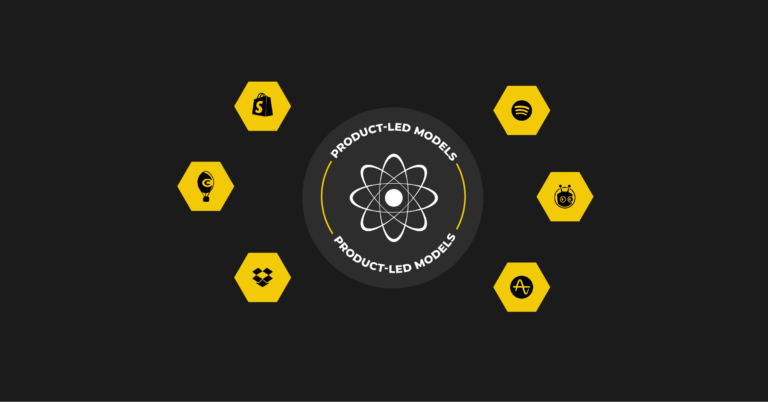The best product iterations don’t come from intuition—they come from speaking directly with your customers.
UX research allows you to get into the minds of consumers, understanding what they love most—and what they’d love to change—about your product. Combining anecdotal and aggregate research allows you to continuously improve upon your product, thereby scaling your company.
In fact, research shows that investing in UX research can bring a whopping 9,900% ROI for your company.
Translation? When it comes to growth, investing in UX research is non-negotiable.
Norah Shi and Eduardo Gomez Ruiz of Miro, a collaborative online whiteboard tool, recently shared their thoughts on UX research with the ProductLed Podcast. While these two colleagues serve into two distinct apartments—Nora serving as Growth the Growth Analytics Manager while Eduardo acting as the UX Research lead—they share the same goal: solve customers’ problems.
Zeroing in on this singular goal led to incredible growth for Miro, with over 20M users and global offices throughout the United States, Amsterdam, Australia, Germany, and Japan (to name a few).
Below, we explore why research should hold a central role in your UX and growth teams based on Norah’s and Eduardo’s experience, along with tips for launching a research strategy at your organization.
First Things First: Why UX and Growth Teams Should Start With Research
Approach the research team quickly, because you cannot refine a product without cold, hard facts justifying each new feature.
Both growth and UX teams should always start with research, with the aim to answer the question, “What problems do our users have, and how can we use those problems as inspiration for new products or features?”
Investing in a UX research strategy paves the way for more successful product launches, with the support of UX research tools making the process easier. A better product, in turn, leads to exponential sales for your company. Miro’s business model revolves around offering a freemium product. In other words, potential customers interact with Miro before they become registered users. If the product experience is a positive one, Miro’s growth team can capitalize off viral loops, converting a free user into a paying customer. That paying customer, in turn, raves about Miro’s functionality, recommending the tool to their colleagues.
But if the product experience is negative, that viral loop never takes shape. Research shows that 90% of users will stop using an app if it performs poorly.
In other words, Miro has a narrow window to make a good impression on first-time users — otherwise, their carefully-formed growth strategy falls apart.
How To Implement a UX Research Strategy at Your Company: 5 Tips To Follow
The goal of a UX research strategy is to build a better experience for your customers. To accomplish this, Miro uses several real-life strategies, including:
1. Put Your Users in the Driver's Seat
When conducting in-depth interviews, each participant has two options: the user can speak freely and share notes, or they can physically demo the product. If the choice were up to him, he would have participants select the latter — every.single.time.
Here’s why: with the user in the driver’s seat, he’s free to observe any sudden pauses, confusion, or errors made or felt by the user. When (not if) that happens, it’s a clear signal the user experience can be improved. For example, if the user can’t find a tutorial video, a CTA button isn’t clearly displayed, or a landing page needs to be restructured, it shows precisely where the UX needs to be improved.
2. Bring the User Voice To Company Messaging
If a new product feature hasn’t taken hold within your audience, perhaps users simply don’t understand how to use it (or what it does). If that’s the case, you may need to tweak the company messaging or website/app copy, pulling words or phrases directly from your users’ mouths.
Many times, companies use jargon that the average person might not understand. So it’s suggested to record each interview with your users, then weaving in their words and phrases within company messaging.
3. Understand Your Customer Personas
The goal of any product, growth, or UX team is to solve problems for customers. Therefore, when developing your UX research strategy, one of your first steps should be to understand those customers—developing distinct personas for them.
When approaching customer personas, ask yourself, “What research questions do we need to be answered, and who are the best people to answer those questions?”
If your team can align on various cohorts in your audience, you will better understand who you are solving a problem for. By painting a clear picture of a persona, you can decipher the motivation behind a customer’s behavior.
4. Don’t Be Afraid To Use Your Own Intuition
When conducting UX research, your team will look into trends, behavior patterns, and other data points to form a hypothesis. You’ll work with a team of engineers and—based on the data collected—come to a hypothesis: “I predict that if we launch X new feature, Y will happen.”
This step is far easier when you have a relatively sizable research team standing behind you. As a growing startup, you may have to rely on your own intuition.
Learn to recognize problems or errors when customers demo your product, even when the customer didn’t explicitly express it was a problem. Look at past behavior within different segments of your audience, using the information available to improve your product design and ultimately convert more customers.
5. Collect as Many Data Points as You Can
Finally, growth and UX teams should never forget this one piece of advice: to solve a problem, you need to collect as many data points as you can.
Recruiting users to partake in stakeholder interviews can be a heavy lift, with a conversion rate of roughly 10%. In other words, if you want to interview just 10 people, you will need to cold email 100 to reach your goal.
There are seemingly limitless ways to go about this, but here are a few examples:
- Reach out to users through various marketing channels, asking them to take part in a stakeholder interview.
- Send an automated email to registrants after they first use the product, asking them about their experience.
- Recruit colleagues from every department within your company to conduct in-depth interviews, thereby collecting a wide range of views on one problem. (Pro tip: create a designated research Slack channel where interviewers can debrief after each conversation.)
- Consider offering incentives (like an Amazon gift card) to get a better response rate for user surveys.
Research Is the Best Tool To Solve Consumer Problems
The best sales tool is a high-quality product your customers will love. To build that product, you need to invest in a UX research strategy.
UX research allows you to place cold, hard facts between each new product iteration. It allows you to develop a user-centric growth strategy with a clear understanding of your customers’ problems and a roadmap on how to solve them. To do this, researchers should observe users demoing the product themselves, use their users’ language in company copywriting, develop a clear understanding of customer personas, and collect as many data points as possible.
Want to learn more about how a better user experience can lead to exponential growth for your company? Listen to the full episode below:









